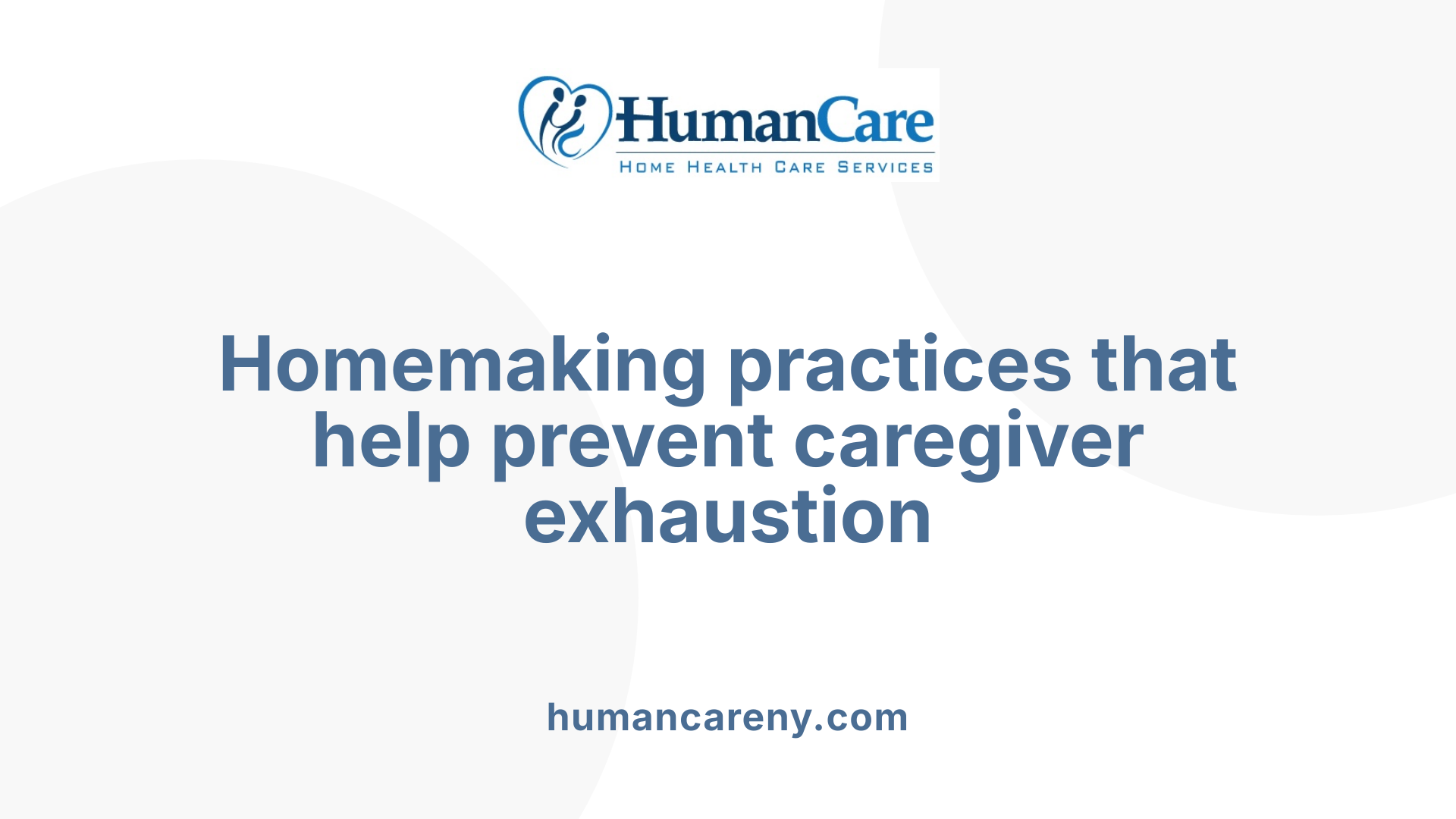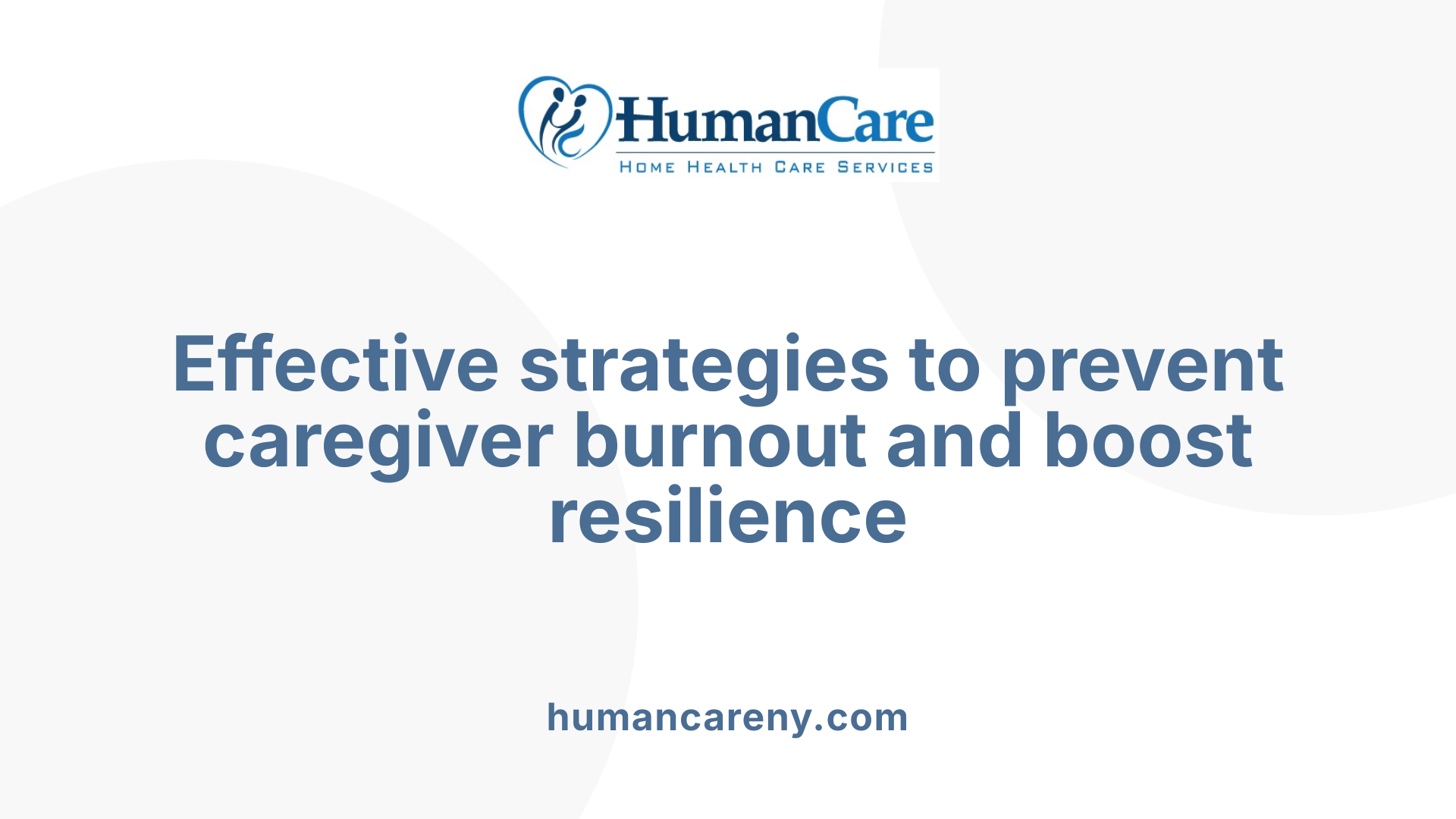Understanding the Importance of Homemaking in Reducing Stress
As the population ages and caregiving demands increase, many caregivers find themselves overwhelmed by physical, emotional, and mental stress. Homemaking activities and in-home care support services represent vital tools in alleviating these burdens. This article explores how practical homemaking approaches can significantly diminish caregiver stress, promote well-being, and foster a healthier, more balanced caregiving environment.
The Role of Homemaking Activities in Creating a Supportive Environment

How can homemaking activities reduce caregiver stress?
Homemaking activities play a crucial role in easing the burden experienced by caregivers. By focusing on routine household tasks such as cleaning, meal preparation, laundry, and organizing, caregivers can create a safer and more comfortable home environment for their loved ones. These activities help maintain the health and safety of care recipients, which reduces worries about hazards or emergencies.
Engaging in daily household routines provides a sense of control and accomplishment for caregivers. Completing tasks offers emotional satisfaction and fosters a feeling of being effective in their role. Moreover, these activities serve as opportunities for companionship and interaction, helping to lessen feelings of loneliness and social isolation.
Supporting independence is another benefit of homemaking tasks. When the environment is organized and accessible, older adults can perform many activities on their own, which minimizes the level of supervision needed. This, in turn, reduces the physical and emotional exhaustion of caregivers.
Routine household chores also serve as a form of emotional relief. Caregivers often worry about their loved ones’ health and safety; managing the home environment effectively can alleviate these concerns. Ultimately, homemaking activities help create a manageable living situation for both caregiver and recipient, leading to less stress, improved emotional well-being, and better overall caregiving experiences.
Supporting independence and safety of care recipients
Maintaining a clean, organized, and accessible home environment encourages seniors to continue independent living. Simple modifications, such as removing tripping hazards or installing grab bars, can make the space safer.
Routine household tasks also promote regular health monitoring and early detection of potential issues, helping to prevent emergencies and hospitalizations.
Routine household tasks as emotional and physical relief
Tasks like preparing favorite meals, tidying living spaces, or watering plants can provide mental relaxation and emotional satisfaction. These routines help establish a predictable daily schedule, offering stability for care recipients and peace of mind for caregivers.
Involving caregivers in these routines allows for shared responsibility, reducing feelings of guilt or being overwhelmed. This structured approach fosters a more balanced caregiving environment where both caregiver and recipient feel valued and supported.
| Aspect | Benefits | Additional Details |
|---|---|---|
| Physical tasks | Reduce exhaustion | Safe handling techniques by trained professionals mitigate injury risks |
| Emotional well-being | Decrease anxiety | Routine and companionship foster emotional stability |
| Independence | Promote autonomy | Home modifications and accessible routines support self-sufficient living |
| Safety | Minimize hazards | Regular home assessments and adaptations prevent accidents |
| Social connection | Reduce loneliness | Engaging in household activities offers social interaction |
Creating a home environment that supports routine homemaking activities is an effective strategy to lessen stress and promote the well-being of both caregivers and care recipients. These tasks not only maintain physical safety but also nurture emotional resilience, making daily caregiving more sustainable.
Benefits of In-Home Care and Homemaking Support

What are the benefits of in-home care and homemaking support for caregivers?
In-home care and homemaking support provide significant relief to family caregivers by alleviating their physical and emotional stress. These services help prevent burnout and promote overall well-being, allowing caregivers to better manage their responsibilities.
One major benefit is assistance with daily routines like bathing, dressing, meal preparation, and medication management. This not only ensures the safety and comfort of the care recipient but also helps maintain their independence in familiar surroundings.
Professional in-home caregivers are trained to monitor hazards and assist with mobility, further increasing safety. By sharing responsibilities, these services enable caregivers to take much-needed breaks, engage in self-care activities, and stay connected socially.
Providing education and emotional support from healthcare professionals enhances communication and caregiving strategies. This can lead to improved health outcomes, reduced hospitalizations, and better quality of life for both caregivers and recipients.
Cost-effectiveness is another advantage. Compared to institutional care, in-home services often cost less, reducing financial stress for families.
Overall, in-home care and homemaking support help sustain caregivers' health, boost their confidence, and create a more positive caregiving experience, ultimately benefiting the entire family.
| Aspect | Benefit | Additional Details |
|---|---|---|
| Physical relief | Reduced exhaustion | Assistance with mobility, safety, and daily routines |
| Emotional support | Decreased stress | Support groups, professional guidance |
| Safety | Enhanced home safety | Hazard monitoring and mobility aid |
| Cost | Financial savings | Usually less expensive than nursing homes |
| Social well-being | Maintains social connections | Opportunities for respite and personal activities |
| Health outcomes | Improved overall health | Fewer hospitalizations and better management of conditions |
Alleviating Emotional and Physical Strain Through Homemaking Support
 Homemaking support plays a crucial role in easing the emotional and physical burdens faced by caregivers. By taking on household responsibilities such as cleaning, meal preparation, and laundry, homemaking services free caregivers from daily chores that can feel overwhelming. This reduction in household tasks not only decreases physical exhaustion—often caused by physically demanding duties like lifting or cleaning—but also alleviates emotional stress that arises from juggling multiple responsibilities.
Homemaking support plays a crucial role in easing the emotional and physical burdens faced by caregivers. By taking on household responsibilities such as cleaning, meal preparation, and laundry, homemaking services free caregivers from daily chores that can feel overwhelming. This reduction in household tasks not only decreases physical exhaustion—often caused by physically demanding duties like lifting or cleaning—but also alleviates emotional stress that arises from juggling multiple responsibilities.
Providing reliable in-home support creates vital respite periods for caregivers, giving them time to rest, attend to personal health, or simply recharge their mental well-being. This break can prevent burnout, which is a common risk when continuous caregiving leaves little room for self-care. Homemaking services also offer companionship and social interaction, helping to reduce feelings of loneliness and isolation that many caregivers experience.
Sharing caregiving duties with professional homemakers or support services allows family caregivers to maintain better emotional balance. They can focus on their own health needs or spend quality time with loved ones, which improves overall mental health and resilience. Physically, these services help prevent injuries related to fatigue and overexertion, ensuring that caregivers can continue providing care without compromising their own health.
In summary, homemaking support not only lightens household workload but also offers emotional comfort and social connection, fostering a healthier, more sustainable caregiving experience. This support enables caregivers to manage their responsibilities more effectively, resulting in improved physical well-being and emotional stability.
Impact of Home Care Services on Caregiver Well-being
How do home care services impact caregiver well-being and stress?
Home care services play a crucial role in enhancing the health and emotional state of caregivers by offering vital support that alleviates their daily burdens. These services include respite care, assistance with routine activities such as bathing, dressing, meal preparation, and transportation, as well as emotional support through companionship and shared responsibilities.
For caregivers aged 65 and older, professional home care has been linked to better overall health outcomes. These services provide necessary breaks, ensuring caregivers can manage their physical and mental health effectively. Meanwhile, support programs, subsidies, and ongoing training help caregivers feel more competent and less overwhelmed.
However, the impact varies among caregivers under 65, especially when caring for individuals with complex or severe health conditions. High-intensity caregiving often correlates with increased stress and feelings of burden. Studies indicate over 60% of caregivers experience burnout, which can lead to depression, chronic health issues, and even higher mortality risks.
Utilizing respite care options—such as in-home breaks, adult day care centers, or short-term nursing home stays—helps prevent exhaustion. Support initiatives and caregiver education further empower caregivers and reduce feelings of isolation. Ultimately, targeted support through home care services enhances well-being, reduces stress, and mitigates the risk of burnout, especially for those managing demanding caregiving roles.
Supporting caregivers with structured help and emotional relief
Providing accessible, tailored home care services meets caregivers’ physical, emotional, and social needs. This comprehensive approach fosters better health, enhances resilience, and promotes long-term caregiving sustainability.
| Service Type | Benefits | Additional Details |
|---|---|---|
| Respite Care | Short-term relief | In-home, adult centers, temporary nursing facilities |
| Emotional Support | Reduces loneliness | Support groups, professional counseling |
| Routine Assistance | Helps daily tasks | Meal prep, transportation, housekeeping |
| Training & Education | Builds confidence | Caregiver skills workshops, online programs |
| Financial Support | Eases economic burden | Subsidies, caregiving stipends |
Addressing high-intensity caregiving through these services is essential. They reduce physical exhaustion, safeguard mental health, and improve quality of life for both caregivers and recipients.
Effective Strategies for Managing Caregiver Stress
How can utilizing respite care and support networks help manage caregiver stress?
Respite care provides essential relief by offering temporary caregiving support through options like in-home assistance, adult day centers, and short-term nursing care. These services enable caregivers to take breaks, recover physically and emotionally, and attend to personal needs, reducing feelings of exhaustion and burnout.
Support networks, including caregiver groups, community resources, and national programs, deliver emotional support and practical advice. Connecting with others facing similar challenges fosters a sense of community, alleviates loneliness, and provides coping strategies.
Creating a support system with regular check-ins, support meetings, and professional assistance enhances resilience and helps caregivers better manage stress.
| Respite Options | Description | Benefits |
|---|---|---|
| In-home respite | Care provided at home by trained professionals | Caregivers get breaks; loved ones receive professional support |
| Adult day centers | Social and health services during day hours | Reduces social isolation; improves the older adult’s well-being |
| Short-term nursing homes | Temporary institutional care | Offers full care during emergencies or when additional support is needed |
What self-care routines and boundaries can help caregivers reduce stress?
Maintaining physical health is crucial; regular exercise, balanced nutrition, adequate sleep, and hydration foster resilience. Setting personal boundaries, such as declining excessive caregiving requests, helps prevent overextension.
Scheduling regular breaks—whether short daily pauses or longer periods through respite care—is vital. Engaging in relaxing activities like reading, hobbies, walking, or meditation provides mental relief.
Practicing quick stress-relief techniques, such as deep breathing or stretching, can be effective during hectic days. Ensuring time for oneself helps maintain emotional stability.
It’s important to recognize personal limits and communicate needs openly with family members or support services.
| Self-Care Strategies | Examples | Expected Outcomes |
|---|---|---|
| Physical activity | Walking, yoga, stretching | Improves mood; boosts physical health |
| Relaxation techniques | Deep breathing, meditation | Reduces immediate stress |
| Boundaries | Saying 'no,' delegating tasks | Prevents burnout; preserves energy |
| Regular breaks | Short outings, naps | Enhances mental clarity; reduces fatigue |
How does education and training boost caregiving confidence?
Learning about the medical conditions, medications, and daily care routines of loved ones increases competence and reduces frustration.
Caregiver training programs, whether online or in-person, provide practical skills, such as safe lifting, administering medications, and managing behaviors related to dementia or chronic illness.
Educational resources help caregivers understand disease progression, which prepares them for future challenges and allows for better planning.
Confidence gained through education reduces anxiety, enhances communication, and fosters a positive care environment.
| Educational Resources | Focus Areas | Benefits |
|---|---|---|
| Support groups | Emotional sharing, problem-solving | Alleviates feelings of isolation; offers advice |
| Online training modules | Care techniques, disease management | Increases skills; builds confidence |
| Community workshops | Safety, medication management | Enhances competence and safety |
These combined approaches of using respite services, establishing personal boundaries, and acquiring care knowledge are instrumental in alleviating caregiver stress, ensuring both the caregiver’s health and the quality of care for loved ones.
Preventing Burnout with Homemaking Practices

How can homemaking care help in preventing caregiver burnout?
Homemaking care is an effective strategy for reducing burnout among caregivers by creating a balanced and supportive living environment. Establishing routines and stability within the home helps both caregivers and care recipients feel secure and organized, which minimizes chaos and unpredictability.
Involving the care recipient in household tasks, as appropriate, promotes independence and self-esteem, easing the overall responsibility placed on the caregiver. For example, engaging the individual in simple chores like setting the table or watering plants can be empowering and reduce the caregiver’s workload.
Utilizing respite care options and community social support can also be integrated into homemaking practices. Respite services, such as in-home care or adult day programs, provide caregivers with much-needed breaks, allowing them to recharge physically and emotionally.
Combining these homemaking practices fosters a safe, stable environment that encourages mutual participation, promotes independence, and alleviates some of the emotional and physical stresses associated with caregiving. Ultimately, thoughtful homemaking solutions enhance the well-being of both the caregiver and the care recipient, preventing exhaustion and promoting a healthier caregiving journey.
Practical Tips for Caregivers to Reduce Burnout and Enhance Well-being

What are some practical tips for caregivers to reduce burnout via homemaking support?
Caregivers often face immense physical and emotional strain, but there are effective strategies they can implement to lighten this burden. Prioritizing self-care routines is crucial; engaging in regular exercise, eating a balanced diet, and ensuring adequate sleep can significantly boost stamina and mental clarity.
Seeking community and professional support plays a vital role. Support groups, respite care services, and in-home assistance provide caregivers with temporary relief and a shared sense of understanding. Connecting with these resources also offers practical advice and emotional reassurance.
Implementing small lifestyle modifications can improve overall health. Simple activities like daily stretching, mindfulness exercises, or short walks can reduce stress levels. Maintaining regular health check-ups ensures physical issues are addressed proactively.
Setting realistic goals and establishing boundaries prevent feelings of being overwhelmed. Learning to ask for help—whether from family, friends, or professionals—can distribute responsibilities more evenly and reduce guilt or anxiety.
Staying connected with loved ones, engaging in hobbies, and practicing self-compassion help maintain emotional well-being. Consistent, manageable self-care routines create resilience, allowing caregivers to provide the best care possible without sacrificing their health.
In essence, combining homemaking support with everyday health practices and community engagement fosters sustainability in caregiving roles and promotes overall wellness.
Empowering Caregivers for Sustainable Support
Implementing homemaking strategies and utilizing in-home care services are critical in creating a sustainable, less stressful caregiving environment. By sharing responsibilities, establishing routines, seeking respite, and accessing mental health resources, caregivers can significantly reduce their physical and emotional burdens. These approaches not only enhance their well-being but also improve the quality of care for their loved ones. Support systems that involve homemaking support foster resilience, prevent burnout, and enable caregivers to continue their vital role with confidence. Recognizing and embracing these strategies paves the way for healthier, happier caregiving experiences.
References
- Caregiver stress: Tips for taking care of yourself - Mayo Clinic
- How In-Home Care Can Reduce Stress for Families
- Use of Home Care Services Reduces Care-Related Strain in Long ...
- How Home Health Care Agencies Can Manage Caregiver Stress
- 5 Ways Home Care Helps Relieve Family Caregiver Stress
- Strategies for Caregiver Stress Management and Self-Care
- How In-Home Care Can Help Avoid Caregiver Burnout
- How Home Care Eases Caregiver Stress
- Taking Care of Yourself: Tips for Caregivers
- Beating Caregiver Stress With Self-Care | Health at Home



